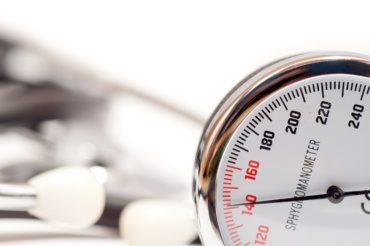Hi there!
In one of the previous articles, we talked about cardiovascular diseases (CVDs), which are non-communicable diseases affecting the heart and blood vessels.
Today we are going to treat more specifically this class of diseases. Let’s have a deeper look into hypertension.
What is hypertension?
Blood pressure (BP) is the pressure exerted by the blood pumped by the heart on the walls of the arteries. An individual is hypertensive when BP is too high (> = 140 mmHg for the systolic pressure and > = 90mmHg for the diastolic pressure).
Systolic pressure indicates the pressure in blood vessels when the heart contracts, while diastolic pressure represents the pressure in blood vessels when the heart rests between beats.
Risk factors can be divided into two categories:
- Modifiable risk factors: unhealthy diet, obesity or overweight, sedentary lifestyle, smoke and excessive alcohol consumption;
- Non-modifiable risk factors: age (>65 years), family history of hypertension and co-existing diseases.
Men are more prone to hypertension than women. Symptoms do not always appear, but when they arise may include as follows: headache, dizziness, irregular heart rhythms, vision changes, nosebleeds, fatigue, nausea, vomiting, confusion, anxiety, chest pain and muscle tremors.
Severe hypertension can induce serious damage to the heart such as angina, heart attack, heart failure, stroke and kidney failure.

PA and hypertension
The number of people with hypertension is increasing worldwide dramatically, representing a high risk of cardiovascular mortality.
Pharmacological and lifestyle interventions, including physical activity, are important tools to prevent hypertension. These interventions are useful to manage the development of hypertension in normotensive individuals and to reduce BP in hypertensive patients.
Particularly, the practice of physical activity has different positive effects:
- lowers resting heart rate, resting systolic BP and increases heart rate reserve, reducing myocardial oxygen demand;
- decreases arterial stiffness, enhancing endothelial function;
- improves myocardial perfusion;
- reduces vascular inflammation (levels of proinflammatory cytokines);
- increases antioxidant defences.
All these benefits can prevent atherosclerotic phenomena and mentioned cardiovascular diseases.
It is common to think that aerobic exercise training is the best type of exercise to treat and manage hypertension. But, are we really sure that it is the only and the most effective one?
In the next article, we’ll deepen which types of exercise training can play an important role to handle with hypertension. So, let’s keep in touch!
References
Alberto J Alves, João L Viana, Suiane L Cavalcante, Nórton L Oliveira, José A Duarte, Jorge Mota, José Oliveira, and Fernando Ribeiro (2016). Physical activity in primary and secondary prevention of cardiovascular disease: Overview updated. World Journal of Cardiology, 8(10): 575-583;
World Health Organization (WHO) 2019. Hypertension;
Edited by
Dott. Luca Rotundo



Commenta con Facebook